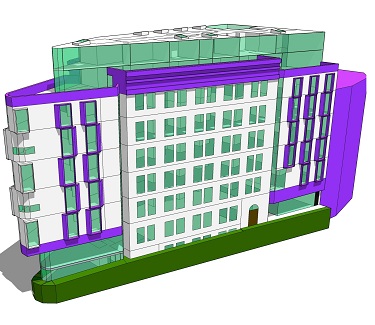Green Star Rating
Green Star rating scheme assigns energy stars from 4 to 6 stars to major new building developments or alteration/extension projects. The rating scheme considers sustainability measures from building insulation to hiring an apprentice. Green Star is not a compulsory scheme, however, some councils include Green Star in the Consent Conditions. The Minimum Green Star rating is 4-star and requires achieving a minimum of 15 points to satisfy the current rating tool, i.e, Green Star Buildings (formerly Design & As-Built). See below for more:
Green Star Rating
Green Star rating scheme assigns energy stars from 4 to 6 stars to major building developments. The rating scheme considers sustainability measures from building insulation to hiring an apprentice. Green Star is not a compulsory scheme, however, some councils include Green Star in the Consent Conditions. The Minimum Green Star rating is 4-star and requires achieving a minimum of 15 points to satisfy the current rating tool, i.e, Green Star Buildings (formerly Design & As-Built). See below for more:
At Energy Compliance, we offer all avenues to demonstrate your building compliance under any conditions.
At Energy Compliance, we offer all avenues to demonstrate your building compliance under any conditions.

Quality
We perform more iterations to reduce your construction costs.
We conduct the best yet low-cost solutions for your building to achieve a Green Star Rating.

Quality
We perform more iterations to reduce your construction costs.
We conduct the best yet low-cost solutions for your building to achieve a Green Star Rating.

Service Guarantee
If we can’t reduce your construction cost by more than our fee while obtaining a Green Star Rating, we’ll only charge our 40% deposit. This is the best proof of how cost-efficient our performance-based solutions are. You won’t get this anywhere else!

Quick Turnaround
Quotations: Same business day of inquiry.
Green Star Rating reports: the delivery time will be discussed upon the inquiry.

Quick Turnaround
Quotations: Same business day of inquiry.
Green Star Rating reports: the delivery time will be discussed upon the inquiry.
What is involved in Green Star Certification?
1. Select what to target from the list of Green Star credits (sustainability measures):
During the concept design stage, a Green Star specialist such as our consultants will present a list of sustainability measures (or Green Star Credit items) based on cost-effectiveness and explain the pros and cons of targeting certain credit.
The building design team will agree to include the targeted credits requirements in their design and in the tender documentation. There are also a set of Minimum Expectations that must be followed (which will be discussed in this article).
Did you know?
At Energy Compliance, we list sustainability options based on cost effectiveness to assist developers to achieve the highest sustainability at lowest cost.
We are Accredited Green Star Professionals (AGSP) and we deliver Green Star energy modelling, daylight modelling and CFD modelling.
2. Pay Green Star certification fee:
If the building team targets getting certified as a Green Star building, a fee must be paid to the Green Star Council of Australia (GBCA) to audit the design and construction documentation. This fee is paid directly to GBCA and can be found on the Green Star website and ranges from $20k to $40k depending on the construction budget. This fee can be paid by the developer anytime from concept design prior to final completion.
Note that some councils require that the development is designed to achieve green star and they don’t have to pay the Green Star fee.
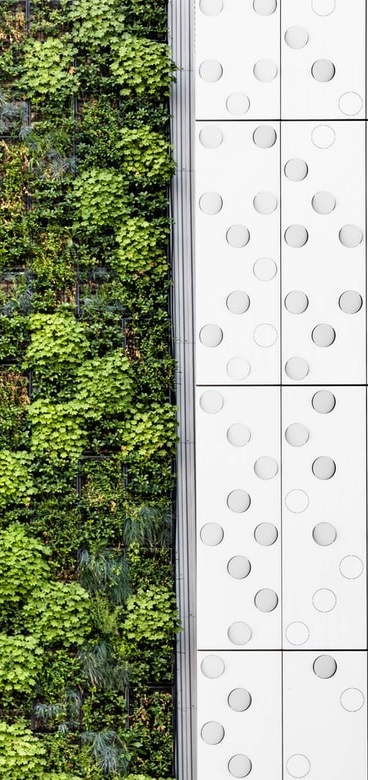
3. Perform energy modelling:
As a minimum requirement, it is required to perform an energy modelling which is similar to the NCC Section J JV3 modelling to prove that the building outperforms NCC Section J Deemed to Satisfy provisions to a certain degree. This is done in tandem with the project HVAC consultant as all assumptions in the energy modelling shall match the design criteria and design documentation.
4. Summarize all Green Star requirements in the ESD report:
All the targeted credits and energy modelling reports are summarized in the ESD report which is referred to in the main builder’s tender document.
5. Collect relevant evidence from the design team and contractors
Green Star Accredited Professional (GSAP) continuously monitors builder’s compliance to the selected green star targets in the ESD report. GSAP also is responsible to conduct a sense of collaboration between different design teams and to collect the relevant evidence that will be needed for certification.
6. Green Star Certification:
Upon completion of construction works and before issuing an occupancy permit, the ESD report and all evidence required by Green Star are submitted to get the project officially certified.
What is involved in Green Star Certification?
1. Select what to target from the list of Green Star credits (sustainability measures):
During the concept design stage, a Green Star specialist such as our consultants will present a list of sustainability measures (or Green Star Credit items) based on cost-effectiveness and explain the pros and cons of targeting certain credit. The building design team will agree to include the targeted credits requirements in their design and in the tender documentation. There are also a set of Minimum Expectations that must be followed (which will be discussed in this article).
Did you know?
At Energy Compliance, we list sustainability options based on cost effectiveness to assist developers to achieve the highest sustainability at lowest cost.
We are Accredited Green Star Professionals (AGSP) and we deliver Green Star energy modelling, daylight modelling and CFD modelling.
2. Pay Green Star certification fee:
If the building team targets getting certified as a Green Star building, a fee must be paid to the Green Star Council of Australia (GBCA) to audit the design and construction documentation. This fee is paid directly to GBCA and can be found on the Green Star website and ranges from $20k to $40k depending on the construction budget. This fee can be paid by the developer anytime from concept design prior to final completion.
Note that some councils require that the development is designed to achieve green star and they don’t have to pay the Green Star fee.
3. Perform energy modelling:
As a minimum requirement, it is required to perform an energy modelling which is similar to the NCC Section J (JV3) modelling to prove that the building outperforms NCC to a certain degree. This is done in tandem with the project HVAC consultant as all assumptions in the energy modelling shall match the design criteria and design documentation.
4. Summarize all Green Star requirements in the ESD report:
All the targeted credits and energy modelling reports are summarized in the ESD report which is referred to in the main builder’s tender document.
5. Collect relevant evidence from the design team and contractors
Green Star Accredited Professional (GSAP) continuously monitors builder’s compliance to the selected green star targets in the ESD report and collects the relevant evidence that will be needed for certification.
6. Green Star Certification:
Upon completion of construction works and before issuing an occupancy permit, the ESD report and all evidence required by Green Star are submitted to get the project officially certified.
Do I have to pay a fee to Green Star Council to satisfy Green Star requirements?
The short answer is no. Some councils require that the development is designed to achieve Green Star. Though GBCA doesn’t recommend it, to satisfy the council requirements, you don’t have to get the building certified and registered with GBCA and pay the $13k to $50k fee. The project ESD consultant should demonstrate that the builder has followed the ESD and Green Star targets and the building has been designed and the construction is on the path to getting a 4, 5 or 6-star rating.
Note that the above is based on our experience at Energy Compliance with our clients, council and building certifiers/surveyors. It is the building surveyor that has the final word on this matter.
In the following, Green Star requirements are discussed in further detail to assist you in better understanding what are the low-cost Green Star credits to target.
Green Star Credits/sustainability measures
Green Star Building Council of Australia (GBCA) has created the Green Star rating tool. GBCA continuously updates the rating tools and certifies projects. The latest rating tool from GBCA is called Green Star Buildings that is replacing the Design & As-Built rating tool. Green Star Building has the following 7 categories of sustainability measures:
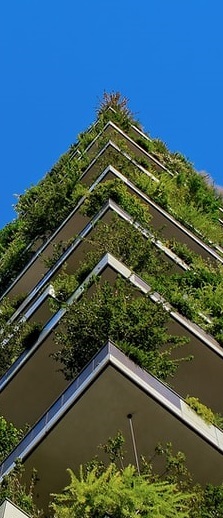
 |
Responsible | Recognises activities that ensure the building is designed, built, and handed over responsibly. |
|---|---|---|
 |
Healthy | Promotes actions and solutions that improve the physical and mental health of occupants. |
 |
Resilient | Encourages solutions that address the building’s resilience short-term shocks and long-term stresses. |
 |
Positive | Encourages a positive contribution to environmental issues of carbon, water, and the impact of materials. |
 |
Places | Supports the creation of safe, enjoyable, integrated, and comfortable places. |
 |
People | Encourages solutions that address the social health of the community. |
 |
Nature | Encourages active connections between people and nature and the creation of biodiverse green spaces. |
Rating Scale
The Green Star rating is determined by counting the total scores that the project has achieved and using the scale below.
4 Star – reflects a Best Practice in construction. It builds on the Minimum Expectations to deliver a building that is either climate positive or a higher performer in energy, water, and health-related issues (15 out of 100 points).
5 Star – demonstrates Australian Excellence and addresses social issues relevant to the building owner (35 out of 100 points).
6 Star – showcases World Leadership. It has been built to be a highly efficient building fully powered by renewables that address a significant number of environmental and social issues and contributes to the community (70 out of 100 points).
Did you know?
As of January 2022, in order to achieve a 6-star rating, the building must comply with climate positive pathway and provide minimum 20% energy use reduction over a typical building, 20% upfront carbon emission reduction through building materials and shall offset carbon emissions from its refrigerant use.

Minimum Expectations in Green Star
There is a set of Minimum Expectations that must be targeted by all projects looking to achieve a Green Star rating regardless of any scores that they target. Minimum Expectations are not awarded points, therefore to achieve a rating the project must accumulate points in addition to the Minimum Expectations.
The Minimum Expectations aim to ensure all Green Star rated buildings meet a basic definition of a green building that is energy and water efficient, provides healthy spaces and is built responsibly. These are summarized below:
Responsible Construction
The site must have an environmental management plan. The builder must have an environmental management system and 80% of construction and demolition waste must be recycled. Sustainability training should also be is provided to construction workers.
Clean Air
The building ventilation system must have appropriate filtration. Point source pollutants must be exhausted directly outside (printers, kitchens). The building must be provided with an adequate amount of outside air. Note that it only applies to regularly occupied areas. For large carparks with many obstacles to exhaust flow, a CFD modelling may be required to back up the sufficient air change claims.
Verification and Handover
The building must be commissioned and tuned. Appropriate metering must be present. This is one of the more stringent credits that shall be satisfied by all projects that are Green Star rated.
Light Quality
Glare must be managed (by for instance internal blinds). Light fittings must be of good quality. Lighting levels must be appropriate. A daylight strategy must be developed. Daylight modelling may be required to back up the claims.
Operational Waste
The building must have appropriate spaces for waste management and an appropriately sized loading dock.
Acoustic Comfort
Internal noise levels from services and the outside is limited through an acoustic comfort strategy.
Exposure to Toxins
All the paints, adhesives, sealants, and carpets must have low levels of Volatile Organic Compounds. Engineered wood must be low formaldehyde. There must be no lead, asbestos or PCBs in the building.
Climate Change Resilience
The project should document completing a simple pre-screening assessment to identify climate-related risks facing the building. As a minimum requirement, there is no need to implement any of the identified risks.
Upfront Carbon Emissions
The building has to have at least 10% less upfront carbon emissions compared to a standard building from materials. This is a tedious item to demonstrate. Essentially, all new, existing and reused building materials (concrete, bricks, plaster,…) should be quantified and the relevant upfront carbon emission calculated from a standard GBCA table. Builders should then decide which building materials they want to source that have a lower carbon emission compared with the standard materials. Most often, if there is a demolition involved, reusing some of the existing materials might be the most cost-effective solution.
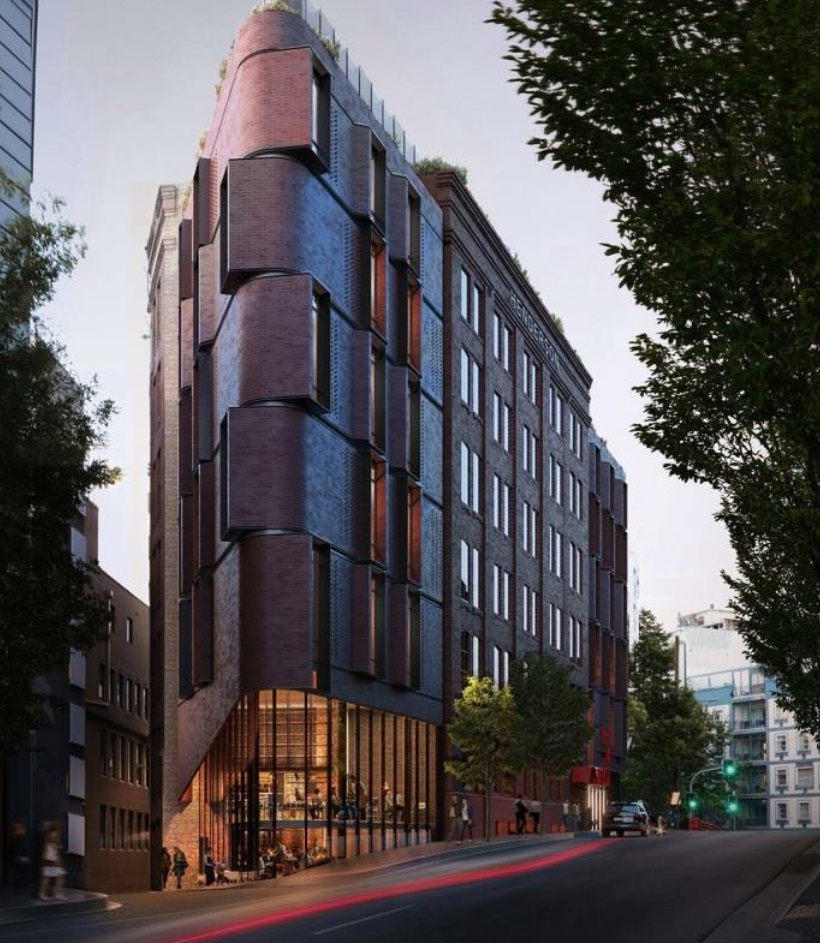
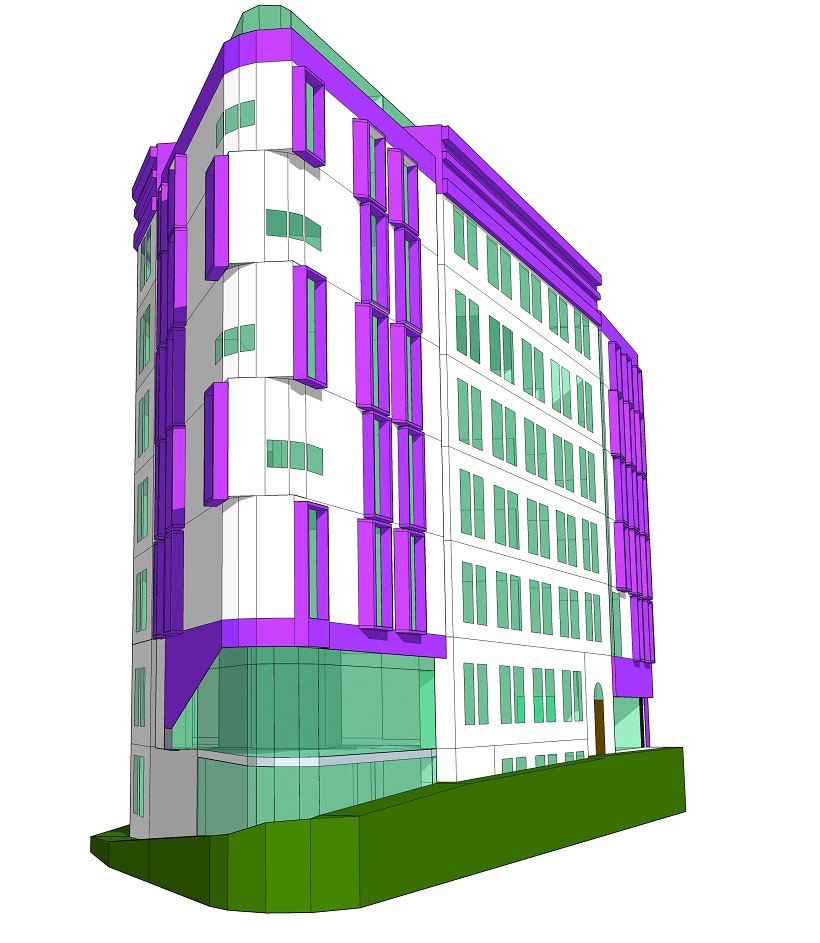
Energy Use
The building has to have at least a 10% lower energy consumption than the Reference project which is a combination of the Performance Requirements of NCC and the modelling requirements of GBCA. This item requires developing at least two building energy models. One is based on the client wish list for all the insulation glazing and building services. The other one is called the Reference project and it is almost similar to the NCC Reference building for JV3 modelling but with some changes required by the GBCA Calculation Guide. Click here for more…
Energy Source
The building has to provide a Zero Carbon Action Plan. A template table is agreed upon and signed by the investor which specifies a target year in future (such as 2050) when the building will be zero carbon emission. This means switching from natural gas heaters to electric heat pumps for space heating and domestic hot water generation in most cases. Also, all refrigerants used in the building services should be specified.
Total building greenhouse gas emissions between now and the target year should be quantified and compared to the case if all interventions in future are applied now.
Water Use
The building has to install water-efficient fixtures and appliances with the approved WERS rating which is described in the GBCA guide. GBCA has a detailed Water Use Calculator that comes in handy for documenting the compliance with this credit.
Movement and Place
For commercial building’s staff (apartments excluded), there should be dedicated showers, lockers, and change rooms in the building. Number of each is detailed in the GBCA guide.
Inclusive Construction Practices
There are provisions for providing gender-appropriate facilities and personal protective equipment for the construction stage that are detailed under this credit.
Impact to Nature
Ecologically sensitive sites are protected. Also, the light pollution caused by the building external and/or internal lighting fixtures must be minimised.
Minimum Expectations in Green Star
There is a set of Minimum Expectations that must be targeted by all projects looking to achieve a Green Star rating regardless of any scores that they target. Minimum Expectations are not awarded points, therefore to achieve a rating the project must accumulate points in addition to the Minimum Expectations.
The Minimum Expectations aim to ensure all Green Star rated buildings meet a basic definition of a green building that is energy and water efficient, provides healthy spaces and is built responsibly. These are summarized below:
Responsible Construction
The site must have an environmental management plan. The builder must have an environmental management system and 80% of construction and demolition waste must be recycled. Sustainability training should also be is provided to construction workers.
Clean Air
The building ventilation system must have appropriate filtration. Point source pollutants must be exhausted directly outside (printers, kitchens). The building must be provided with an adequate amount of outside air. Note that it only applies to regularly occupied areas.
Verification and Handover
The building must be commissioned and tuned. Appropriate metering must be present. This is one of the more stringent credits that shall be satisfied by all projects that are Green Star rated.
Light Quality
Glare must be managed (by for instance internal blinds). Light fittings must be of good quality. Lighting levels must be appropriate. A daylight strategy must be developed.
Operational Waste
The building must have appropriate spaces for waste management and an appropriately sized loading dock.
Acoustic Comfort
Internal noise levels from services and the outside is limited through an acoustic comfort strategy.
Exposure to Toxins
All the paints, adhesives, sealants, and carpets must have low levels of Volatile Organic Compounds. Engineered wood must be low formaldehyde. There must be no lead, asbestos or PCBs in the building.
Climate Change Resilience
The project should document completing a simple pre-screening assessment to identify climate-related risks facing the building. As a minimum requirement, there is no need to implement any of the identified risks.
Upfront Carbon Emissions
The building has to have at least 10% less upfront carbon emissions compared to a standard building from materials. This is a tedious item to demonstrate. Essentially, all new, existing and reused building materials (concrete, bricks, plaster,…) should be quantified and the relevant upfront carbon emission calculated from a standard GBCA table. Builders should then decide which building materials they want to source that have a lower carbon emission compared with the standard materials. Most often, if there is a demolition involved, reusing some of the existing materials might be the most cost-effective solution.


Energy Use
The building has to have at least a 10% lower energy consumption than the Reference project which is a combination of the Performance Requirements of NCC and the modelling requirements of GBCA. This item requires developing at least two building energy models. One is based on the client wish list for all the insulation glazing and building services. The other one is called the Reference project and it is almost similar to the NCC Reference building for JV3 modelling but with some changes required by the GBCA Calculation Guide. Click here for more…
Energy Source
The building has to provide a Zero Carbon Action Plan. A template table is agreed upon and signed by the investor which specifies a target year in future (such as 2050) when the building will be zero carbon emission. This means switching from natural gas heaters to electric heat pumps for space heating and domestic hot water generation in most cases. Also, all refrigerants used in the building services should be specified.
Total building greenhouse gas emissions between now and the target year should be quantified and compared to the case if all interventions in future are applied now.
Water Use
The building has to install water-efficient fixtures and appliances with the approved WERS rating which is described in the GBCA guide. GBCA has a detailed Water Use Calculator that comes in handy for documenting the compliance with this credit.
Movement and Place
For commercial building’s staff (apartments excluded), there should be dedicated showers, lockers, and change rooms in the building. Number of each is detailed in the GBCA guide.
Inclusive Construction Practices
There are provisions for providing gender-appropriate facilities and personal protective equipment for the construction stage that are detailed under this credit.
Impact to Nature
Ecologically sensitive sites are protected. Also, the light pollution caused by the building external and/or internal lighting fixtures must be minimised.

Green Star vs JV3 modelling,
Similarities and differences in energy modelling
For major commercial projects that are seeking to minimize the cost of glazing and energy construction, a JV3 Performance Solution is a very common method to undertake. Also, some projects choose or are mandated to achieve a certain Green Star rating. In both cases, there is a need to create a building energy model for both a Proposed building with Proposed services that is compared with a Reference building with Reference services. Here, we intend to highlight different modelling requirements for JV3 and Green Star.
Definitions:
- Proposed building [pb]: building geometry and insulation that the developers want to build. For instance, the R-value of the roof is R1.0 which is the maximum that can be fitted inside a roof gap.
- Reference building [rb]: building geometry and insulation level that complies with the minimum requirements. For instance, the R-value of the roof shall be R3.2 for Climate Zone 6.
- Proposed services [ps]: building services that the developers want to build. This includes the exact equipment (chiller, pumps, staging of chiller etc. that is shown on the “For Construction” drawings.
- Reference services [rs]: building services that comply with the minimum requirements. For instance, air-cooled chiller with exact full load efficiency of 2.985 in accordance with NCC and “Green Star energy use calculation guide v1.0”.
- Services: Includes air conditioning system (chiller, boiler, …), staging of equipment, lighting fixtures, domestic hot water system, lifts, air conditioning and water supply pumps, swimming pool. Building services excludes appliances (occupants TV, Fridge, PC, …) energy use. Click here to read more.
A typical comparison between Proposed and Reference building is shown in the following figures on this page:
Parameter |
Green Star modelling |
NCC JV3 modelling |
|---|---|---|
| Compliance criteria |
Compliance to the Energy Use Minimum Expectation is achieved if the following condition is met: if Energy use (pb+ps) < 10% Energy use (rb+rs) (See above for definitions) |
Compliance is achieved if both following conditions are met: if CO2 (pb+ps) < CO2 (rb+rs) & if CO2 (pb+rs) < CO2 (rb+rs) (See above for parameter definition) |
| Domestic hot water usage | The proposed building can use appliances with a high WELS rating and demonstrate lower water use and lower domestic hot water use compared to Reference building to improve energy compliance. Reference and Proposed building potable water usage are calculated from “Potable Water Use Calculator”. |
The proposed building cannot claim less cold or hot water consumption for demonstrating energy compliance. Domestic hot water usage is equal in both Reference and the Proposed buildings and are extracted from NCC Vol 1.0, Specification JVc, Table 2m. |
| Reference services |
Must comply with NCC Vol 1.0, Part J5 to J8 requirements. Reference services design and modelling requirements are thoroughly detailed. |
Must comply with NCC Vol 1.0, Part J5 to J8 requirements. Reference services design and modelling requirements are not detailed. |
| Solar PV | Reference building: no requirement.
Proposed building: cannot claim onsite solar electricity generation and use to offset other services energy use (applies only to the Minimum Expectation requirements). It can only be used for claiming Energy Use credit achievement points. |
Reference building: no requirement.
Proposed building: can use onsite solar electricity generation and use it to offset other services CO2 emissions. |
| Lighting control (such as motion detectors) |
Reference building: no control is required.
Proposed building: illumination control adjustment factors values are extracted from [Green Star Calculation Guide, Table 73”. For instance, if there is a motion detector in a toilet, NCC allows for an adjustment factor, not more than 0.9 |
Reference building: no control is required.
Proposed building: illumination control adjustment factors values are extracted from [NCC Vol 1.0, Section J, Part J6, Table J6.2b”. For instance, if there is a motion detector in a toilet, NCC allows for an adjustment factor of 0.4 |
| Fresh airflow | Reference building: Fresh air as per AS 1668.2:2012 plus 0% to 20%. NCC allows increasing Reference building fresh airflow by a maximum of 20% only. This applies to only regularly occupied areas.
Proposed building: any air flow rate can be applied for non-residential building: Minimum Expectation: 50% improvement to AS 1668.2:2012. |
Reference building: Fresh air as per AS 1668.2:2012 plus 0% to 20%. NCC allows increasing Reference building fresh airflow by a maximum of 20% only. This applies to only regularly occupied areas.
Proposed building: any air flow rate can be applied. The same proposed air flow rates of the Green Star model can be applied to the JV3 model. |
| Glazing | Reference Building: wall-glazing shall satisfy NCC Section J1.5.
Proposed building: wall-glazing shall satisfy NCC Section J1.5. |
Reference Building: wall-glazing shall satisfy NCC Section J1.5.
Proposed building: No requirement. |
| Solar absorptance | Reference Building: 0.6 for walls, 0.45 for roofs (all Climate Zones excluding Climate Zone 8)
Proposed building: as per material selection, plus 0.05 for walls and roofs to account for fouling and weathering of the materials. |
Reference Building: 0.6 for walls, 0.45 for roofs (all Climate Zones excluding Climate Zone 8)
Proposed building: as per material selection. Green Star proposed materials considering the effect of weathering can be applied. |
| Wall-glazing construction |
Proposed building must comply with Section J1.5 (wall-glazing) minimum requirements. | Proposed building: No limit on wall-glazing construction provided the reduction in the GHG emissions are satisfied. |
| Proposed building services | Proposed building must comply with Section J5.4 (fan systems), J5.7 (pump systems), J5.10 (refrigerant chillers) and J5.12 (heat rejection equipment) minimum energy efficiency requirements. | Proposed building: No limit on fan systems, pump systems, refrigerant chillers and heat rejection equipment minimum energy efficiency requirements. |
| Artificial lighting | Proposed building must comply with Section J6.2 (artificial lighting) overall lighting efficiency requirements. | Proposed building: no limit on artificial lighting efficiency requirements. |
| PMV check | No PMV check required. | For the Proposed building, a thermal comfort level of between a Predicted Mean Vote (PMV) of -1 to +1 must be achieved across not less than 95% of the floor area of all occupied zones for not less than 98% of the annual hours of operation of the building. |

Green Star vs JV3 modelling,
Similarities and differences in energy modelling
For major commercial projects that are seeking to minimize the cost of glazing and energy construction, a JV3 Performance Solution is a very common method to undertake. Also, some projects choose or are mandated to achieve a certain Green Star rating. In both cases, there is a need to create a building energy model for both a Proposed building with Proposed services that is compared with a Reference building with Reference services. Here, we intend to highlight different modelling requirements for JV3 and Green Star.
Definitions:
- Proposed building [pb]: building geometry and insulation that the developers want to build. For instance, the R-value of the roof is R1.0 which is the maximum that can be fitted inside a roof gap.
- Reference building [rb]: building geometry and insulation level that complies with the minimum requirements. For instance, the R-value of the roof shall be R3.2 for Climate Zone 6.
- Proposed services [ps]: building services that the developers want to build. This includes the exact equipment (chiller, pumps, staging of chiller etc. that is shown on the “For Construction” drawings.
- Reference services [rs]: building services that comply with the minimum requirements. For instance, air-cooled chiller with exact full load efficiency of 2.985 in accordance with NCC and “Green Star energy use calculation guide v1.0”.
- Services: Includes air conditioning system (chiller, boiler, …), staging of equipment, lighting fixtures, domestic hot water system, lifts, air conditioning and water supply pumps, swimming pool. Building services excludes appliances (occupants TV, Fridge, PC, …) energy use. Click here to read more.
A typical comparison between Proposed and Reference building is shown in the following figures on this page (scroll the table to the right to see the full extent):
Parameter |
Green Star modelling |
NCC JV3 modelling |
|---|---|---|
| Compliance criteria |
Compliance with the Energy Use Minimum Expectation is achieved if the following condition is met: if Energy use (pb+ps) < 10% Energy use (rb+rs) (See above for definitions) |
Compliance is achieved if both following conditions are met: if CO2 (pb+ps) < CO2 (rb+rs) & if CO2 (pb+rs) < CO2 (rb+rs) (See above for parameter definition) |
| Domestic hot water usage |
The proposed building can use appliances with a high WELS rating and demonstrate lower water use and lower domestic hot water use compared to Reference building to improve energy compliance. Reference and Proposed building potable water usage are calculated from “Potable Water Use Calculator”. |
The proposed building cannot claim less cold or hot water consumption for demonstrating energy compliance. Domestic hot water usage is equal in both Reference and the Proposed buildings and are extracted from NCC Vol 1.0, Specification JVc, Table 2m. |
| Reference services |
Must comply with NCC Vol 1.0, Part J5 to J8 requirements. Reference services design and modelling requirements are thoroughly detailed. |
Must comply with NCC Vol 1.0, Part J5 to J8 requirements. Reference services design and modelling requirements are not detailed. |
| Solar PV | Reference building: no requirement.
Proposed building: cannot claim onsite solar |
Reference building: no requirement.
Proposed building: can use onsite solar |
| Lighting control (such as motion detectors) |
Reference building: no control is required.
Proposed building: illumination control For instance, if there is a motion detector |
Reference building: no control is required.
Proposed building: illumination control For instance, if there is a motion detector in a |
| Fresh airflow |
Reference building: Fresh air as per AS 1668.2:2012 plus 0% to 20%. NCC allows increasing Reference building fresh airflow by a maximum of 20% only. This applies to only regularly occupied areas.Proposed building: any air flow rate can be applied for non-residential building:Minimum Expectation: 50% improvement to AS 1668.2:2012. Credit Achievement: 100% improvement to AS 1668.2:2012.[Green Star Buildings, V1, July 2021]. |
Reference building: Fresh air as per AS 1668.2:2012 plus 0% to 20%. NCC allows increasing Reference building fresh airflow by a maximum of 20% only. This applies to only regularly occupied areas.Proposed building: any air flow rate can be applied.The same proposed air flow rates of the Green Star model can be applied to the JV3 model. |
| Glazing | Reference Building: wall-glazing shall satisfy NCC Section J1.5.Proposed building: wall-glazing shall satisfy NCC Section J1.5. |
Reference Building: wall-glazing shall satisfy NCC Section J1.5.Proposed building: No requirement. |
| Solar absorptance |
Reference Building: 0.6 for walls, 0.45 for roofs (all Climate Zones excluding Climate Zone 8)Proposed building: as per material selection, plus 0.05 for walls and roofs to account for fouling and weathering of the materials. |
Reference Building: 0.6 for walls, 0.45 for roofs (all Climate Zones excluding Climate Zone 8)Proposed building: as per material selection. Green Star proposed materials considering the effect of weathering can be applied. |
| Wall-glazing construction |
Proposed building must comply with Section J1.5 (wall-glazing) minimum requirements. |
Proposed building: No limit on wall-glazing construction provided the reduction in the GHG emissions are satisfied. |
| Proposed building services |
Proposed building must comply with Section J5.4 (fan systems), J5.7 (pump systems), J5.10 (refrigerant chillers) and J5.12 (heat rejection equipment) minimum energy efficiency requirements. |
Proposed building: No limit on fan systems, pump systems, refrigerant chillers and heat rejection equipment minimum energy efficiency requirements. |
| Artificial lighting |
Proposed building must comply with Section J6.2 (artificial lighting) overall lighting efficiency requirements. |
Proposed building: no limit on artificial lighting efficiency requirements. |
| PMV check |
No PMV check required. | For the Proposed building, a thermal comfort level of between a Predicted Mean Vote (PMV) of -1 to +1 must be achieved across not less than 95% of the floor area of all occupied zones for not less than 98% of the annual hours of operation of the building. |

